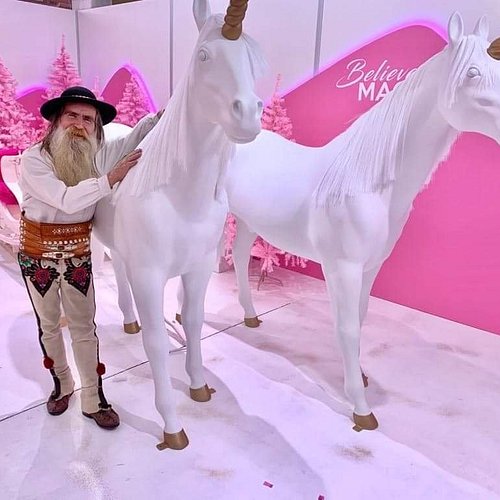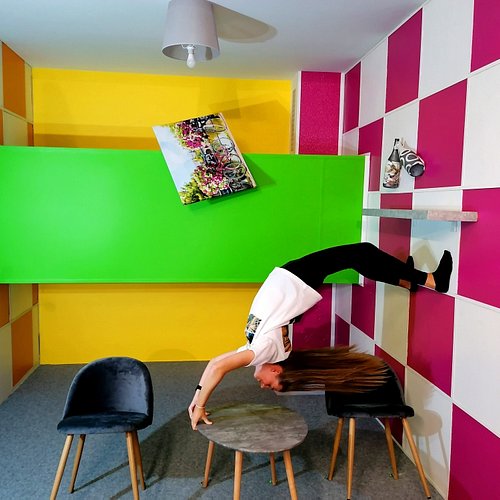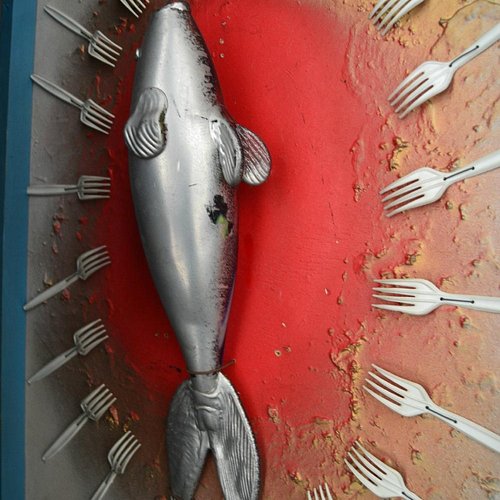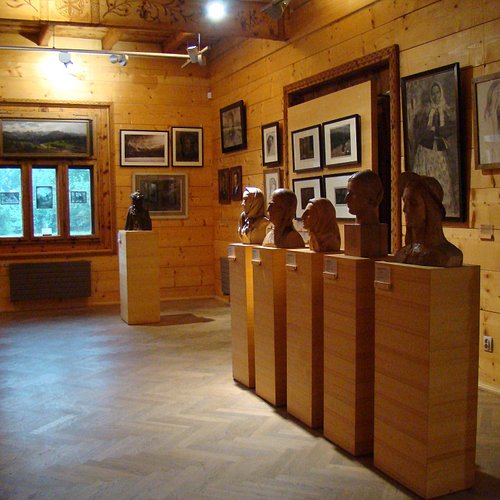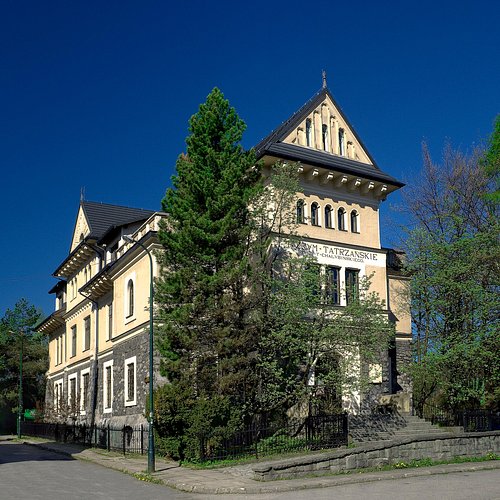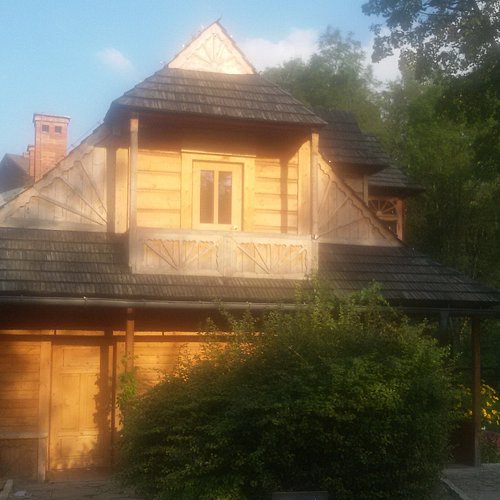What to do and see in Zakopane, Southern Poland: The Best Art Museums
Just a few miles from the Slovak border in south central Poland, Zakopane is a resort town in the Tatra Mountains, popular with skiers in winter and with hikers and climbers year-round. In the late 18th and early 19th centuries, Zakopane grew into Poland’s most visible art colony, a hotbed of culture ended by Soviet influence after World War II. Today it harkens back to an earlier time, complete with gorgeous wooden houses. Learn about these buildings and more at the Museum of Zakopane Style.
Restaurants in Zakopane
1. Gallery of Antoni Rzasa
2. Be Happy Museum Zakopane
Overall Ratings
5.0 based on 106 reviews
Museums of happiness located in Poland. Be Happy Museum is a place where dreams come true and the imagination turns into a sweet and colorful experience. This is a place where illusion stuns and laughs to tears. Dozens of scenes for taking photos, Marshmallow foam pool, banana swing, magic unicorn and much more. Our mission is to cultivate happiness, share good memories and make the world better.
3. Illusion House Zakopane
Overall Ratings
5.0 based on 35 reviews
ILLUSION HOUSE ZAKOPANE offers a unique experience to see and enjoy the magic of optical illusions and 3D paintings that will play with your imagination. Come and experience that things are not always what they seem to be. Covering an area of 450square meters, over 30 attractions await that will awaken your curiosity. A truly fascinating experience for both kids and adults. As the old proverb says “Better to see something once than to hear about it a thousand times.”
4. The Wladyslaw Hasior Gallery
Overall Ratings
4.5 based on 54 reviews
Originally run by the artist, it is a gallery of his works. Born in Nowy Sącz in 1928, Wladyslaw Hasior was first educated in Zakopane under the supervision of the outstanding teacher and artist Antoni Kenar at the State School of Art Techniques, which he completed in 1952. He studied at the Academy of Fine Arts in Warsaw with Professor Marian Wnuk, graduating in 1958, and in Ossip Zadkine's studio in Paris in 1959. Even before his graduation from the Academy, he started teaching at the State School of Art Techniques in Zakopane, with which he was to remain connected for many years. In December 1984 his works were transferred from the artist's small studio to the Gallery in Jagiellońska Street. The Gallery is based in the former resting terrace of the Warszawianka sanatorium. Erected in 1935 to Waclaw Nowakowski's design, the wooden resting terrace originally had two levels glazed from the south. It has been adapted for the gallery needs, becoming a complex of interiors on several layers, intended as exhibition rooms, often a concert hall, as well the artist's home and studio. The Gallery was inaugurated in February 1985. Displayed in the Gallery are Wladyslaw Hasior's famous banners, spatial compositions and sculptures made of various materials as well as objects of daily use, often bordering on junk, which have in the artist's hands acquired a new meaning. Bearing metaphorical, witty, slightly pervert titles, they make one ponder on the present-day world and art.
5. Willa Koliba - Zakopane Style Museum
Overall Ratings
4.5 based on 99 reviews
The Koliba villa, the first building erected to Stanislaw Witkiewicz's design in the Zakopane Style, is situated at Kościeliska Street, Zakopane's oldest street with time-honoured houses and characteristic Tatra crofts at every step. In these surroundings we can better understand Stanislaw Witkiewicz's concept. Five rooms in the oldest part were arranged in accordance with their original function as, on the ground floor, the dining room, drawing room and bedroom, and, on the first floor, Gnatowski's room and his servant's room. Zygmunt Gnatowski's ethnographic collection returned to its place in the 'Tatra highlander's chamber'. Other pieces of furniture, household utensils and small craftsmen's articles, all in the Zakopane Style, come from the turn of the century when the style was in full bloom. The Museum of the Zakopane Style is the only place in Poland acquainting the visitor with the history of the achievements of the first theoretically wrought and successfully effected concept of a Polish national style based on the architecture and decorative art of the inhabitants of the region of Podhale.
Reviewed By Starkin
Willa Koliba is situated just off Kościeliska (a street in Zakopane where most of the old wooden highlander houses are). The house is a museum and very good example of the old Goralska (highlander) style which if you are interested in the local architecture is well worth the visit. The craftmanship is amazing! The opening hours can vary and the museum is closed for lunch therefore it is best to check beforehand when it will be open. The staff were pleasant and helpful. At present there is limited English speakers, however, we managed to muddle through and I am sure this will change as more people discover Zakopane. The house has just had renovations carried out to ensure wheelchair access and now there is a small shop.
6. Willa Harenda - Jan Kasprowicz Museum
7. Willa Oksza - Tatra Museum
Overall Ratings
4.5 based on 25 reviews
The exhibition presents the output of the artistic community and artists who were temporarily connected with Zakopane at a time when the village was Poland’s leading centre of artistic excellence. All of them drew inspiration from the Tatra mountains and the Tatra Highlander culture. The display is presented in the interiors of Oksza villa, designed by Stanisław Witkiewicz in 1894 in the Zakopane Style, which was restored by the Tatra Museum in 2010. The exhibition „Artists and Art in Zakopane” is based on the Tatra Museum’s own collection, complemented by a few loans. It embraces painting, graphic arts, drawing, sculpture and photography, as well as applied arts and posters. The display includes artworks by Leon Wyczołkowski, Wojciech Weiss, Zofia Stryjenska, Jan Rembowski, Rafał Malczewski, Stanisław Gałek and Jan Gasienica Szostak; psychological portraits by Stanisław Ignacy Witkiewicz; sculptures by Konstanty Laszczka, Wojciech Brzega, Stanisław Sobczak, Jan Szczepkowski and pupils of the School of Wood Crafts; kilims and lacework, artistic woodcarving and many others exhibits.
8. Muzeum Tatrzanskie im. Dra Tytusa Chalubinskiego
Overall Ratings
4.0 based on 109 reviews
The main building of the Tatra Museum is a valuable monument of architecture in the Zakopane Style. It was built between 1913 and 1922 to a design worked out jointly by Stanislaw Witkiewicz (façade) and Franciszek Mączyński (technical design). Though modified over the years, the exhibition in the main building has survived to this day unchanged in its basic concept. As before, the goal is to give the visitor an insight into the most important aspects of the natural environment in the Tatra Mountains and the region of Podhale, the history of the area and the local people's way of living, as well as their culture.
Reviewed By feelingfernweh
The Tatra Museum has many branches besides just its Main Building, and it is a great way to get to know the history and culture of Zakopane. Although the descriptions are only in Polish, it is still easy to follow the exhibits. Artwork, historical artifacts, natural history, and specimens of Tatra Highlander culture are all on display. For anyone visting Zakopane that wishes to see more than just Krupowki Street, the Tatra Museum is an excellent way to get to know the city and its history.
9. Karol Szymanowski Museum - Willa Atma
Overall Ratings
4.0 based on 19 reviews


